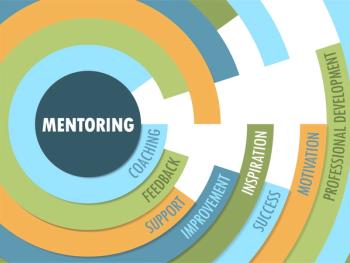
- Psychiatric Times Vol 35, Issue 8
- Volume 35
- Issue 8
Sharing Patient Cases: Balancing Confidentiality and Educational Needs
Providing detailed descriptions of interactions that occurred between patient and therapist moved our field forward by both honing our technique and considering more effective ways to help our patients. But is the sharing of cases ethical?
Prior to 1990, the psychiatric literature often contained detailed clinical case descriptions. These descriptions allowed us to communicate important and nuanced aspects of our psychotherapeutic work. Providing detailed descriptions of interactions that occurred between patient and therapist moved our field forward by both honing our technique and considering more effective ways to help our patients.
Today, the vast majority of professional publications are available to anyone with access to the internet. Perhaps as a result, the number of detailed descriptions in journal articles have decreased, and some have even stopped publishing case reports. In turn, this deprives our field of the opportunities to provide optimal stewardship of our unique and valuable knowledge base. (Of course, presentations to exclusively professional audiences continue; these seminars and conferences remain viable options that can offer this same rich clinical material.)
To maximize our continued progress, we need to retain our practice of presenting detailed clinical reports. Only detailed narratives provide the actual, in-the-moment, give and take of clinical work. Unfortunately, using composite or disguised cases, now a common practice, creates fiction that may fall short of guiding us to the answers, and even to the questions, about real psychotherapeutic process. For example, to achieve anonymity, we may consider changing a refugee from Sudanese to Armenian. That may seem a small detail with no obvious impact until we consider the huge difference between the trauma these two diverse cultures experienced.
There is an inherent dilemma when we publish detailed clinical material. On the one hand, we commit ourselves to providing confidentiality to our patients. On the other hand, we need to consider how to continue moving our field forward by publishing meaningful, detailed clinical material.
Before the internet, there were three generally accepted ways to accomplish this:
• Publish the material and hope the patient would never find it;
• Disguise the identity of patients and change the details of the case so the patient is not recognizable;
• Inform the patient of an intent to publish and obtain the patient’s consent.
Prior to the internet, journal articles were much less accessible to the public. Now, published material can be retrieved rapidly by anyone with internet access and the thought that patients will not find their therapist’s published work is simply naive.
Since clinicians who participate in educational activities are sworn to maintain the same confidentiality as the treating clinicians, teaching and professional presentations are not considered violations of patient confidentiality. Even in these situations, though, we customarily provide only de-identified material to reduce the chances of accidental disclosure.
When it comes to publishing detailed clinical case material, however, de-identification may not offer enough protection, but too much disguise may threaten to make the case a fiction that loses the specificity necessary to advance knowledge. Changing small details, as previously illustrated, can drastically alter the dynamics of a case.
The third option, to inform the patient, may be the safest and most effective approach at this time.1 In fact, most journals now require written consent from the patient. However, there are concerns with this approach, too. We begin our clinical work with each patient by promising them confidentiality. As we discover our patients’ secrets, how can we turn around and say, in essence, “Now I would like to tell the entire world about your thoughts and feelings.”
Similarly, can (and should) we ask the patient for consent, given the potential power differential between patient and therapist? Might the patient react negatively to the publication, even if we ask for and obtain consent in advance? Might what we publish have an adverse effect on the patient’s future life?
If we are to assure continuing advancement of our psychotherapies, we must find solutions to these dilemmas. With the intent of supporting continued stewardship of a progressive knowledge base, the Committee offers the following suggestions in hopes they will open a dialogue that leads to practical, effective solutions to these dilemmas.
To begin, let us consider psychotherapy as a field in medicine that is built on a tripartite model of practice, teaching and research. The knowledge base for this three-pronged endeavor must rest on a foundation of real, not fabricated, clinical observations.
We must also understand that we are not in full control of the clinical process. Neither are we omniscient. Instead, in psychotherapy, we listen with an open mind, stretching ourselves to be aware of the vast uncertainties that always lie before us when we work with our patients. With these perspectives in mind, we might begin our treatments with a consent that acknowledges these perspectives. An example is the following:
From time to time in our work, if and only if it is fully acceptable to you, it may be useful to share what we do here with my colleagues. I might do this to teach or to better understand what we are doing here. Of course, these other medical professionals will keep this material private, just as I do. It may also be useful to share this material with a wider audience, such as by publishing in a professional journal. I would speak with you about this possibility before pursuing it. Again, if you agree, I would work with you to make such a publication acceptable to you, and you will always have absolute veto power to say no to anything before it is submitted for publication.
This sort of consent lays the groundwork for helping the patient become aware of, and participate in, a collaborative process.
We offer 10 guidelines to consider when working toward a publication of detailed clinical material and case reports. These guidelines lay out the details of this collaboration, and they further specify principles to considered in this process.
1 The work to be published should be a finished product, meaning the treatment has been completed or, at a minimum, that the therapeutic work has moved on to other areas and the area of interest has been settled.
2 The therapist should review the work with the patient. Together, they should consider if there is an agreement on the initial problem, the process by which the problem was addressed and settled, and the gains made. This can be a naturally flowing process of constructing a narrative over time. Optimally, the process should culminate in a summary created collaboratively by the therapist and the patient.
3 The therapist and the patient should discuss the importance of sharing this new understanding/narrative with the field, eg, its potential to benefit others. It is important to identify with the patient the patient’s own motivations for consenting.
4 There should be review and oversight of the detailed clinical material that is being considered for dissemination, similar to what an Institutional Review Board (IRB) does for research. Such oversight considers not only the patient’s perspective, but also the importance to the field.
The step should involve both the review of the clinical material as well as the venue of dissemination. At stake is the potential harm to the patient (both present and future) weighed against the benefit to the field.
This process has traditionally been completed by consulting a respected colleague. Ideally this oversight/review should be completed by persons sufficiently knowledgeable and impartial so they may offer objective reflections. The reviewer(s) should not be too close to the author or have any competing interests with respect to the author; these conditions will make it more difficult to render a contrasting view, as bias may be conscious or unconscious.
5 Input from the patient should be elicited during this process. The writing should be offered to the patient, who may want to read and even edit it. This is not to burden the patient, who may not want to participate in the process. Instead, the patient may wish to simply consent to disseminating the agreed upon and previously discussed material.
6 The therapist must make sure that the patient understands the revocable nature of the initial consent-the patient’s veto power-but also understand that once published, the material cannot be unpublished.
7 The therapist must help the patient consider the implications for the patient’s future, including the uncertainty of these speculations.
8 This process of acquiring and maintaining the patient’s consent needs to be accomplished over time. The therapist must consider how to differentiation between collaboration and compliance. This notion should be discussed with the patient.
9 De-identifying the material is important to consider. One way to accomplish this is author anonymity; either use a pseudonym or do not use a byline. Another way is to strip away persons, places and time identifiers, as long as this process does not impact the essence of the clinical presentation.
10 In cases of children and adolescents, parents and other guardians need to be involved in the process. The parents can give consent; the child can assent. Consider approaches that are appropriate for the age and capacities of the child. Techniques are well developed for child/parent assent/consent for research. Thus, therapists might contact nationally respected sources such as the National Institutes of Health regarding their pediatric informed assent protocols.
We offer these ideas as an invitation to a dialogue that seeks a way to resume sharing our detailed clinical work. We hope this will help move our field forward. We welcome your comments. (Please send your comments and thoughts to
Author Note: This article was developed in the course of discussions in the Committee on Professionalism and Ethics of the Group for the Advancement of Psychiatry.
Disclaimer: The opinions or assertions contained herein are the private views of the committee members and are not to be construed as official or as reflecting the views or policies of the Armed Forces Radiobiology Research Institute, the Uniformed Services University of the Health Sciences, the Department of Defense, or any of its affiliated institutions. The funders had no role in study design, data collection, and analysis, decision to publish, or preparation of the manuscript.
Disclosures:
Group for the Advancement of Psychiatry Committee on Professionalism and Ethics: Philip J. Candilis, MD, Interim Director of Medical Affairs and Director, Forensic Psychiatry Fellowship, Saint Elizabeth’s Hospital, Washington DC; Theodore Fallon, Jr, MD, MPH, FABP, Clinical Associate Professor of Psychiatry, Drexel University College of Medicine, Philadelphia, PA; Karen G. Gennaro, MD, MBA, Director, Online Intensive Psychotherapy Program, William Alanson White Institute of Psychiatry, Psychoanalysis and Psychology, New York, NY and Department of Psychiatry, St. Vincent’s Hospital, Harrison, NY; Sheila Hafter Gray, MD, Adjunct Professor of Psychiatry, Uniformed Services University of the Health Sciences, Bethesda MD; Edmund G. Howe, MD, JD, Professor of Psychiatry, Uniformed Services University of the Health Sciences, Bethesda, MD; Robert Nesheim, MD, Executive Medical Director Emeritus, Hamm Memorial Psychiatric Clinic, St Paul, MN and Consulting Psychiatrist, Sawtooth Mountain Clinic, Grand Marais, MN.
The committee reports no conflicts of interest concerning the subject matter of this article.
References:
1. Gabbard GO. Disguise or consent: problems and recommendations concerning the publication and presentation of clinical material. Int J Psycho-Analysis. 2000;81(Pt 6):1071.
Articles in this issue
over 7 years ago
Treating Recalcitrant PTSD With ECT: Are We There Yet?over 7 years ago
PTSD in Late Lifeover 7 years ago
Introduction: PTSD Treatment Strategies and New Initiativesover 7 years ago
Accelerated Resolution Therapy for PTSDover 7 years ago
Complementary and Integrative Health Approaches for PTSDover 7 years ago
Treatment of Bipolar Depression in Children and Adolescentsover 7 years ago
The Role of ECT in the Suicide Epidemicover 7 years ago
Psychiatric Genetics 2018Newsletter
Receive trusted psychiatric news, expert analysis, and clinical insights — subscribe today to support your practice and your patients.

















